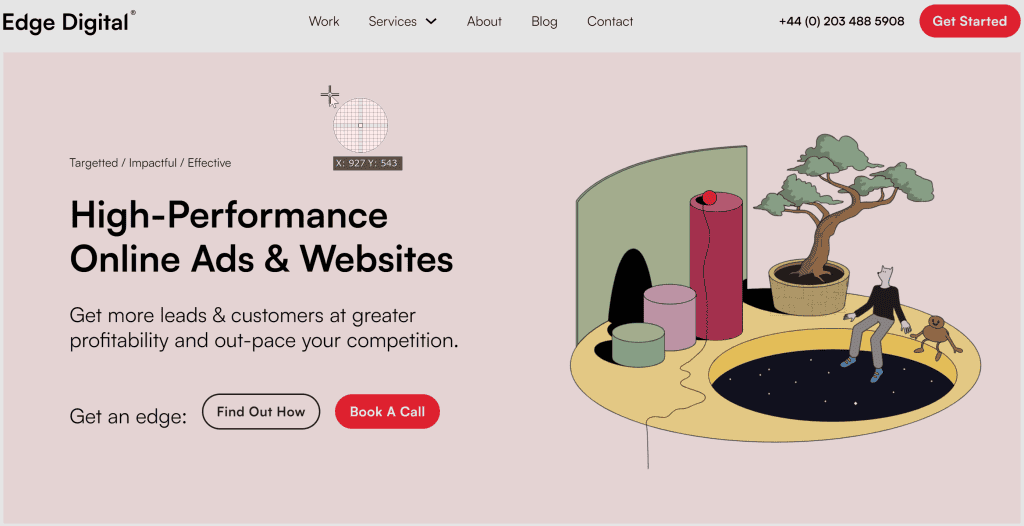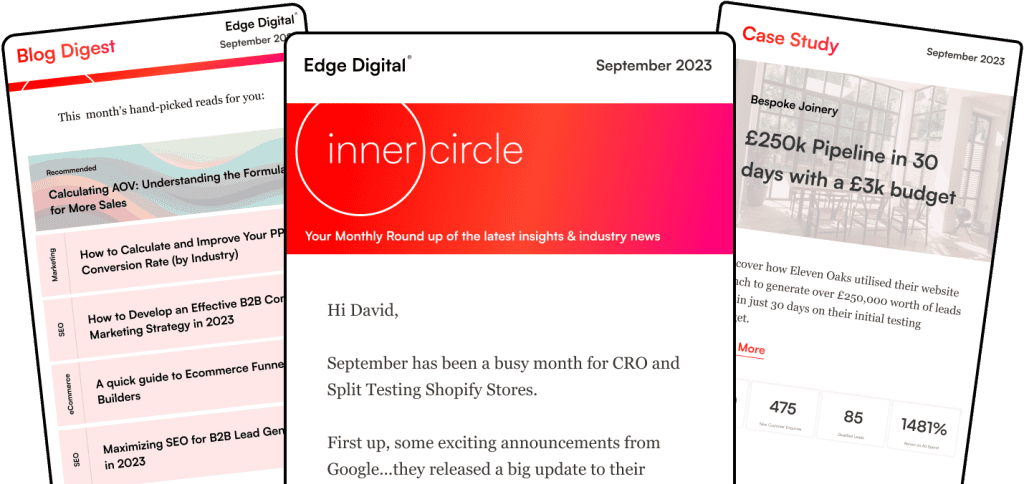In today’s competitive manufacturing landscape, generating high-quality leads is more important than ever. How can manufacturers stay ahead of the curve and attract potential customers? This blog post explores proven strategies for success in manufacturing lead generation, offering valuable insights and best practices that will help you grow your manufacturing business in 2025.
Key Takeaways
- Manufacturers need to understand the lead generation landscape and leverage effective channels such as content marketing, social media marketing, email campaigns and website optimization.
- Networking opportunities like industry events & online platforms provide manufacturers with the opportunity to build relationships & generate leads.
- Measuring success through KPIs & analytics tools allows manufacturers to optimize their strategies for growth.

Understanding the Manufacturing Lead Generation Landscape
Lead generation is the lifeblood of any manufacturing company. It fuels the sales pipeline, ensuring a continuous flow of qualified leads for your business. However, the manufacturing industry faces unique challenges in generating leads, such as transitioning to digital marketing and targeting the right audience. Partnering with a lead generation company can help overcome these challenges and support your sales team.
Manufacturers need a firm grasp of the landscape and should pinpoint growth opportunities to surmount these challenges and enhance their lead generation efforts. High-quality leads and business success can be achieved by manufacturers through:
- Utilization of numerous marketing channels
- Investment in automation
- Progress analysis
- Experimentation with novel ideas.
Importance of Lead Generation for Manufacturers
For manufacturers, lead generation is vital in augmenting revenue, expanding their customer base, and maintaining market competitiveness. Manufacturers can attract more leads and attain higher conversion rates by comprehending their target audience’s needs and interests and customizing their marketing efforts accordingly.
Effective lead generation channels for manufacturers include content marketing, social media marketing, and email campaigns. These channels help build brand awareness, engage potential customers, and showcase the expertise of the manufacturing business. Manufacturers can drive business growth and generate high-quality leads by utilizing these channels and offering valuable resources.
Challenges in Manufacturing Lead Generation
Manufacturing companies experience particular difficulties in lead generation, such as transitioning to digital marketing methods and accurately targeting their audience. Thankfully, there are tools and strategies available to help manufacturers overcome these challenges.
Customer relationship management (CRM) and automation technology can be effective tools for manufacturers transitioning to digital marketing strategies. Here are some steps they can take to effectively target the right audience for lead generation, while also catering to their existing customers:
- Define their target audience
- Create high-value lead magnets
- Optimize landing pages
- Test and refine their strategies
- Utilize targeted advertising
By following these steps, manufacturers can maximize their lead generation efforts.
Effective Lead Generation Channels for Manufacturers
Content marketing, social media marketing, and email campaigns are all viable lead generation channels for manufacturers. Each channel offers unique benefits that can help manufacturers connect with potential customers, build relationships, and generate leads.
We will delve into each of these channels, examining their effective utilization by manufacturers for high-quality lead generation and business growth.
Content Marketing
Content marketing is a powerful tool for manufacturers to showcase their expertise, build trust, and attract a wider audience through informative and relevant content. Manufacturers can engage potential customers and build brand awareness by creating valuable content, including blog posts, videos, and infographics.
Manufacturers can distribute content effectively by leveraging their website, social media, email campaigns, and other digital platforms. By providing valuable content that addresses the needs and interests of the target audience, manufacturers can draw in more leads and establish trust with potential customers.
Social Media Marketing
Social media marketing is a form of marketing that involves creating and sharing content on social media platforms to engage potential customers and build brand awareness. It is beneficial for manufacturers as it helps to reach a wider audience and build relationships with potential customers.
Manufacturers can connect with potential customers, share valuable resources, and stay abreast of industry trends by leveraging various social media platforms. Social media marketing can be particularly effective for targeting specific demographics and generating leads that fit the ideal customer profile.
Email Campaigns
Email campaigns are an essential component of lead generation for manufacturers, helping to nurture relationships with potential customers and encourage them to take specific actions. Manufacturers can effectively connect with their target audience and generate high-quality leads by creating personalized and engaging email campaigns.
Best practices for creating successful email campaigns for manufacturers include:
- Segmenting email lists
- Crafting compelling subject lines
- Personalizing email content
- Including clear calls-to-action
By implementing these strategies, manufacturers can optimize their email campaigns and drive growth in their lead generation efforts.
Conversion Optimization Strategies for Manufacturing Websites
Conversion optimization strategies for manufacturing websites involve improving website design, user experience, and landing page optimization to increase lead generation and conversion rates. Focusing on these key areas can help manufacturers ensure their website attracts and retains visitors, ultimately converting them into valuable leads.
We will delve deeper into these strategies, examining how they can be applied to manufacturing websites for high-quality lead generation and business growth.
Website Design and User Experience
A well-designed website with a focus on user experience is crucial for generating leads in the manufacturing industry, as it helps establish trust with potential customers. Essential elements of a user-friendly website design for manufacturing businesses include:
- HTTPS encryption
- A well-organized layout
- Branded components
- Mobile compatibility
- Logical navigation
- Product catalog features
- Concise messaging
- High-resolution images
- Reliable design elements
- Adaptive design
Manufacturers can create a website that captures visitors’ attention, encourages exploration, and ultimately converts them into leads by incorporating these elements and focusing on user experience, while also optimizing for search engines.

Call-to-Action Buttons and Forms
Call-to-action buttons and forms on manufacturing websites play a significant role in attracting visitors and converting them into leads. Manufacturers can motivate website visitors to take desired actions, such as filling out a contact form or requesting a quote, by designing effective call-to-action buttons and forms.
Recommended practices for designing call-to-action buttons on a manufacturing website include:
- Utilizing action-packed text
- Employing highly contrasting colors
- Implementing a solid button design
- Experimenting with button shapes
- Increasing the button size
- Emphasizing contrast
- Utilizing action-oriented language
- Keeping the language concise and distinctive
- Taking into account the placement of the button
By following these best practices, manufacturers can effectively communicate the desired action and incentivize users to take action.
Landing Page Optimization
Optimizing landing pages for manufacturing companies can significantly improve lead generation by offering valuable content, clear messaging, and compelling visuals. Providing pertinent and educational content on landing pages can motivate visitors to take action, such as completing a form or making a purchase, resulting in higher conversion rates and generating quality leads.
Effective landing page optimization techniques for manufacturers include:
- Employing clear and action-oriented CTAs
- Minimizing distractions
- Utilizing visual hierarchy
- Including strong visuals to highlight the product
By implementing these techniques, manufacturers can create landing pages that effectively engage visitors and convert them into valuable leads.
Networking and Collaboration Opportunities for Manufacturers
Networking and collaboration opportunities for manufacturers include industry events, trade shows, and online networking platforms, which help generate leads and build relationships with potential customers. Manufacturers can showcase their expertise, engage with potential customers, and collect valuable leads by participating in these events and leveraging online platforms.
We will delve into various networking and collaboration opportunities for manufacturers and discuss their utilization for generating leads and driving business growth.

Industry Events and Trade Shows
Participating in industry events and trade shows allows manufacturers to showcase their products, engage with potential customers, and collect valuable leads. Manufacturers can demonstrate their offerings, interact with prospective customers, and acquire valuable leads by attending these events.
Notable industry events and trade shows for manufacturers include Hannover Messe, International Manufacturing Technology Show (IMTS), EMO Hannover, Canton Fair, Design-2-Part, Safety Conference & Expo, Advanced Manufacturing Expo, PACK Expo, FABTECH, and Injection Mold & Design Expo. These events offer manufacturers the opportunity to display their products, network with fellow industry professionals, and stay informed of the latest trends and technologies in the manufacturing industry.
Online Networking Platforms
Online networking platforms, such as LinkedIn and industry-specific forums, provide manufacturers with opportunities to connect with potential customers and collaborate with complementary businesses. Manufacturers can build their network, engage with potential customers, and generate leads that fit their ideal customer profile by leveraging these platforms.
LinkedIn is a key platform for lead generation for manufacturers. It provides a platform to:
- Connect with industry professionals, potential clients, and decision-makers
- Target ideal customers using professional demographic data such as job title and industry
- Share relevant content
- Engage in conversations
- Build a solid network to generate quality leads.

Measuring and Analyzing Manufacturing Lead Generation Success
The measure and analysis of manufacturing lead generation success are vital for gauging marketing efforts’ effectiveness, pinpointing areas for improvement, and attaining business goals. By tracking key performance indicators (KPIs) and employing analytics tools and techniques, manufacturers can make data-driven decisions and optimize their marketing strategies.
We will discuss the significance of measuring and analyzing manufacturing lead generation success and explore various KPIs and analytics tools for tracking and optimizing lead generation efforts.
Key Performance Indicators (KPIs)
Key performance indicators (KPIs) for manufacturing lead generation include:
- Website traffic
- Lead conversion rate
- Lead source
- Return on investment (ROI)
Manufacturers can gain valuable insights into their lead generation efforts’ performance and identify areas for improvement by monitoring these KPIs.
Website traffic, for example, illustrates the efficacy of the overall online presence and can be used to gauge the success of sales and marketing campaigns. The lead conversion rate indicates the percentage of leads that have successfully converted into paying customers and can be calculated using the following formula: Lead Conversion Rate = (Number of Conversions / Number of Leads) * 100.
Analytics Tools and Techniques
Analytics tools and techniques, such as Google Analytics and CRM systems, help manufacturers track and analyze their lead generation efforts to make data-driven decisions and optimize their marketing strategies. Manufacturers can gain insights into their marketing campaigns’ performance, identify potential market opportunities, and improve decision-making processes by using these tools and techniques.
For example, Google Analytics enables the implementation and optimization of conversion tracking, allowing for the tracking of submission actions of leads and the measurement of lead generation conversions. Integrating your CRM with Google Analytics can enhance lead tracking accuracy and provide an all-encompassing perspective of user behavior across different channels. By leveraging these analytics tools, manufacturers can optimize their marketing strategies and drive growth in their lead generation efforts.
Case Studies: Successful Manufacturing Lead Generation Campaigns
Case studies of successful manufacturing lead generation campaigns provide valuable insights and best practices for manufacturers looking to improve their lead generation efforts and grow their businesses. Manufacturers can learn from others’ successes and apply proven strategies to their own lead generation initiatives by analyzing these case studies.
Examples of successful manufacturing lead generation campaigns include:
- Running LinkedIn Lead Gen Forms campaigns
- Providing free CAD files or other tools on their website
- Hosting joint webinars with industry partners
- Implementing a well-planned inbound and outbound lead generation strategy
These case studies demonstrate that by employing various lead generation techniques and adopting a data-driven approach, manufacturers can significantly increase lead generation and drive business growth.
Summary
In conclusion, manufacturers looking to improve their lead generation efforts this year should focus on understanding the lead generation landscape, employing effective lead generation channels, optimizing their website for conversions, leveraging networking and collaboration opportunities, and measuring and analyzing their lead generation success. By applying the proven strategies and best practices discussed in this blog post, manufacturers can generate high-quality leads, boost sales, and achieve their business goals.
Frequently Asked Questions
How do you generate leads in manufacturing?
Generate leads in manufacturing by developing a marketing strategy, understanding what you’re measuring, studying competitors, maintaining an online presence, establishing buyer personas, speaking in their language, knowing prospects’ challenges and goals, creating offers that entice leads at different buying stages, designing your site with conversion in mind, running strategic PPC campaigns, encouraging customers to leave reviews, hosting webinars, sharing your expertise, and being active on social media.
Which are the 4 steps of the lead generation process?
The four steps of a successful lead generation process are lead awareness, lead education, lead sampling and lead conversion.
Is lead generation a KPI?
Lead generation is an important KPI as it allows you to measure the effectiveness of your lead generation strategy. It helps track how many new leads are being added to the sales funnel each month, providing you with valuable metrics to work with.
What are the key challenges faced by manufacturers in lead generation?
Lead generation presents unique challenges for manufacturers, including transitioning to digital marketing, targeting the right audience, and managing customer data.
What are some effective lead generation channels for manufacturers?
Content marketing, social media marketing, and email campaigns are all effective lead generation channels for manufacturers to increase their visibility and reach prospective customers.




